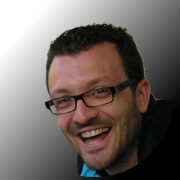Latest Trends in Free Electron Lasers
A special issue of Applied Sciences (ISSN 2076-3417). This special issue belongs to the section "Optics and Lasers".
Deadline for manuscript submissions: closed (31 January 2022) | Viewed by 28017
Special Issue Editor
Interests: condensed matter under nonequilibrium conditions; electronic processes in light-activated functional materials; matter in extreme conditions; solid-density plasma; nonlinear interactions between extreme ultraviolet light and matter; ultrafast chemical reactions
Special Issue Information
Dear Colleague,
I invite you to submit an original research paper, a review, or a perspective article to this Special Issue on “Trends in Free Electron Lasers” in Applied Sciences.
After about 10 years of intense development and necessary commissioning, the free electron laser (FEL) technology is reaching maturity and can provide ultrashort intense coherent X-ray and extreme ultraviolet pulses for innovative investigations on matter. Following a natural adaptation period, an interdisciplinary scientific community routinely working on FEL facilities has grown, incorporating synchrotron and table-top fs-laser know-how. Stimulated by experimental findings, theoretical scientists have begun to simulate FEL-driven ultrafast dynamics in matter and develop new nonequilibrium theoretical methods. Meanwhile, a novel class of FEL sources experts, the “FEL physicists”, have become crucial to the proper operation and improvement of FELs.
Today, people involved in the amazing rise of FELs can be proud of the work done and look to future advances. FEL users, aware of both the limits and the potential of FEL experimental methods and techniques, can now formulate ideas for breakthrough experiments and identify future scientific challenges with the assistance of advanced numerical calculations perfected by theoreticians. FEL physicists have the crucial role of further developing FEL sources, improving their performance and flexibility, and pursuing original FEL light generation schemes.
It is important to understand in what new directions the young FEL community is moving and inform both present and potential future members about promising opportunities.
The aim of this Special Issue is to anticipate and highlight scientific and technological trends involving FELs, facilitate the dissemination of new ideas in the field, and contribute to the consolidation of the FEL community. Topics of interest include:
- frontier FEL science;
- challenging FEL experiments to be attempted;
- novel experimental methods, instrumentation, and techniques;
- numerical calculations on nonequilibrium matter;
- simulation of ultrafast dynamics;
- breakthrough FEL technologies and devices;
- new FEL light generation schemes; and
- future developments of FEL facilities.
Your contribution to this Special Issue is welcome.
Dr. Emiliano Principi
Guest Editor
Manuscript Submission Information
Manuscripts should be submitted online at www.mdpi.com by registering and logging in to this website. Once you are registered, click here to go to the submission form. Manuscripts can be submitted until the deadline. All submissions that pass pre-check are peer-reviewed. Accepted papers will be published continuously in the journal (as soon as accepted) and will be listed together on the special issue website. Research articles, review articles as well as short communications are invited. For planned papers, a title and short abstract (about 100 words) can be sent to the Editorial Office for announcement on this website.
Submitted manuscripts should not have been published previously, nor be under consideration for publication elsewhere (except conference proceedings papers). All manuscripts are thoroughly refereed through a single-blind peer-review process. A guide for authors and other relevant information for submission of manuscripts is available on the Instructions for Authors page. Applied Sciences is an international peer-reviewed open access semimonthly journal published by MDPI.
Please visit the Instructions for Authors page before submitting a manuscript. The Article Processing Charge (APC) for publication in this open access journal is 2400 CHF (Swiss Francs). Submitted papers should be well formatted and use good English. Authors may use MDPI's English editing service prior to publication or during author revisions.
Keywords
- free electron lasers
- FEL sources
- FEL light generation schemes
- relativistic linear accelerators
- FEL experimental methods
- ultrafast phenomena
- nonequilibrium matter
- sub-picosecond dynamics
- nonlinear x-ray/matter interaction
- high-energy and density matter
- coherent control
- ab initio theoretical calculations





